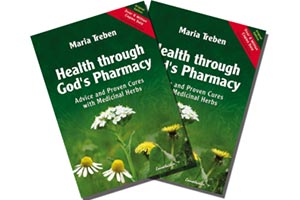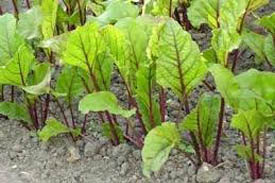Gardening: Apples and Oranges
Unfortunately we cannot grow oranges unless inside a Greenhouse. My miniature oranges, limes and grapefruit leave much to be desired- but it is fun. On a more serious note let us discuss growing apples.
Let us assume you have bought an old farmstead, or a place with an acre or two. Your first fruit trees will probably be apples. I have talked with many would be “applers”and the first thing on their mind is a “Standard” size tree. They want fruit trees to be left to their children ad etc. This is the first mistake.
Your young children will not likely live on your homestead; they will, after growing up leave and live in an apartment. That is a fact. To rectify this common belief is to grow fruit for yourself.
The problem with standard trees is they take upwards of ten years to start real production. In the mean time, and for the next 50 or so years you have to spray, prune and harvest. Harvesting sounds like fun but eventually after the real production comes in what do you do with all the apples? You can only make so much applesauce. Once you neglect the apple fall off from the trees, they rot, smell and draw flies. Now in the old days when people had real orchards they planed their fencing to run the pigs under the trees, and they would clean up the fall on the ground.
Climbing a tree when you are younger may even be fun, but when you pass 50 you are getting shaky and the trees more brittle. You do not need a broken hip.
Trees that you buy today are root grafted to grow a certain way. Modern apple trees are a column, straight arrow central leader tree so that you can back the tractor up to them and place a big shaker band around the tree, and shake the tree, catching the apples in a giant inverted umbrella.
Old-timer trees were pruned out to grow with 3 or 4 limbs rising up from the central leader 4 or so feet off the ground. These open vase, open crotch, or open leader trees let in more sunshine, required more pruning of branches, and produced more apples-if you had a labor force to climb the trees to pick the apples.
China can grow more apples, and make more apple products than we can-cheaper too. This has destroyed the apple orchard business. You will not make any money trying to grow apples for a business.
I wanted to get the standard tree risks out in the open, although I know you do not want to read what I have just written. Let us move on to more modern applications.
The semi-dwarf apple is by its name: smaller, spreading about 12 feet wide and maybe 15 feet high. I caution dear reader as the terminology has changed, often now with smaller home sites to sell semi-dwarfs they are called “dwarfs”. Always read the size of the advertisement so that you are not misled.
The semi dwarf size is more reasonable to manage and you can prune with a chain saw on a pole, or with extended cutters. You can also reach the top with a home hand pump sprayer and pick fruit with a fingered cup on a pole. Figure about three years before they come into production and will live an average of 30 or so years.
You do have to prune the tree each year before the buds swell out, and spray or you will get no fruit to speak of. The goal of the tree is to reproduce and that implies making seed. Scrubby little apples will have great seed but the fruit is unfit to eat. Prune, prune, prune. There are dozens of books on this subject and you will need to purchase one.
It is important to note that apple trees for the majority require another different variety to cross-pollinate. Also you cannot grow true trees from the seed since who knows where the wind and bees have visited and brought in a different pollen. Johnny Apppleseed stories are cute but not real.
There exists for the smaller homestead, or backyard grower, even a deck planting in a large pot- miniature trees that are super producers, easy to care for, and in the space of one large standard tree you can have a dozen different varieties to munch on. Some of these trees are column trees, growing from a vertical single column, and would be nicely framed in as a backdrop to a wall.
Take a look at Miller Nurseries, item # 11353-14 and 11355-24. Other major nurseries will have similar as well as midget trees-all root grafted to grow small and manageable. This appears the wave of the future. I might add for those looking to sell their homes, an inducement that motivates potential buyers is a started or thriving orchard of fruit trees. This is cheaper than residing the house.
Apple trees grow best with wet feet. Notice that they grow along river and creek ways. Old Timers always planted an apple tree near their spring. The tenacious roots would keep the cracks in the rock open for the spring to work. “Lose a tree-lose your spring”.
It may interest Dear Reader that many fruits were developed in the 1400’s, as grafting became known. Often as not you are eating from a tree that is several hundred years old, as that is the way fruit trees are perpetuated. Also there exists, if you web search, many dedicated people who keep old time varieties going. The ones in the stores and most commonly sold by the major nurseries grow and sell what survives the best, and is best for shipping.
If we go back a few decades when we had local farms that produced, you had available specialized “antique” fruits, found rarely elsewhere.
The problem with growing antique varieties is that they require more care, and that means dedication, although the rewards to a snow apple are beyond compare with a wine sap.
Now that I have reached my later years I am inclined to look towards the wonderful Asian imported new varieties. Since I do not want to start a vast orchard and wait past my given time for production I think about how I can build a mini orchard in the backyard and protect from deer, birds and bugs.
My plans are to till up a strip 8’ wide and X feet long (depends on how many trees I can afford). Then space out, probably 8’ apart in a row my drilled six inch wide, two feet deep holes- one in the center filled with composts and topsoil, then drilled on each side, more holes filled the same with goodness. This saves the old fashioned way of hand digging a five foot hole and refilling it etc. My opinion it is not necessary to place flat rocks below the surface to force the roots to go horizontal. Roots send out the tiniest small root feelers and they locate goodness. Then they fatten up and become the big feeder roots. The trees have been growing longer than we have; I think they have developed a good system. Once they have located the initial food packed holes, they will continue to grow and prosper-it is just that we have to get them off to a good start.
For those of limited physical means you can have good success with fertilizer spikes of the fruit variety sold for that purpose.
Once the plugs are done, the next step for me is to collect rainwater from the roof gutters and that means running our previously discussed garden plot 4” diameter, sock covered slotted drain pipe along the center of the row about a foot deep.
Then order the trees. We want the beds built long before we order the trees otherwise there will be the traditional spring rush and you will wind up just sticking the tree in the soil and neglecting it. One thing at a time.
Once I have perused the nursery catalogs and decided on what miniature type trees I want, (I am inclined toward the column type) I will place my order for a spring delivery. Once they have arrived I will have my 1-gallon size, potting soil pre filled cans ready to receive the apple seedlings.
The reason I am taking the seedlings and starting them in the cans is that they arrive bare rooted. They have no feeder roots ready. If I stick them in the ground now, shortly the summer draught will ensue and I will lose my investment and precious time. Next fall when the rainy season starts again, is the time to plant them as roots grow best in the cold months, and as the roots develop they can then, in the summer, send up energy to produce fruit, or in their mind- seeds.
A bag of the Organic Potting Soil-now selling at Wal*Mart™ at $8.00 a bag looks good, or any rough potting soil in a bag that has fertilizer pre mixed is good. Do not use Big Lots, as it is not fertilized and has a heavy clay base. I mention this as many of us become heavy handed on mixing commercial fertilizer and you can damage your seedlings. Besides it is easier.
With a big gallon can-or larger, punch in, with your claw hammer a couple of holes, or more for drainage. Fill the can with potting soil, soak it overnight. The day the seedlings arrive, place them in a bucket of water so they can absorb extra moisture. With the can ready, make a hole in the potting soil which has packed down about one third. Have another can of wet potting soil handy.
Take the seedling and dust the “Root Starting Gibberellic Acid Dust” on it. This is found in the local nurseries and seed catalogs in small jars. Carefully place the root down into the can’s hole and squeeze the potting soil over the root. Now add the extra potting soil from the other can to fill up to the rim. Squeeze it all down- and this is the important part- adjust the rootstock up or down to where the graft lump is visible. We call this the soil line and you want the graft just above the soil, or you will have roots growing out of that graft and interfere with your perfect tree. Read the directions that come with the tree on planting.
You can read more about Gibberellic Acid Kits from J.L.Hudson, Seedsman at: www.jlhudsonseeds.net Just ask for his catalog, which is a seed bank.
Later on in the fall, your growing bed has adjusted to a pH of 6.5 (average), the composts have settled nicely as it waits your loving hand and the new seedling.
If you do not wait for fall planting from the pre starter can and stick it in the ground now- recall you will have to lug 15 gallons of water each week for the tree-each tree. Figuring at 3 gallons a minute it takes a good 5 minutes to water one tree with a hose. Use the roof gutter run off. Watch your plants carefully for dryness. Some watering will always be necessary in the hot summer.
Your tree-planting guide sent with the tree will mention pruning. Tractor Supply has a good English copy of a pruning shear you will like at $10.00 each. This is the Corona Anvil Pruner. Yes, you will have to make your first cut, probably cutting off the top third of the tree seedling right above a bud.
Spring is close by and garden fever is pushing me to get moving. As soon as this rain is over and a warm spell sets in again I can get back to the garden….How about you?
Copyright: 2009 Back2theLand, Mark Steel



